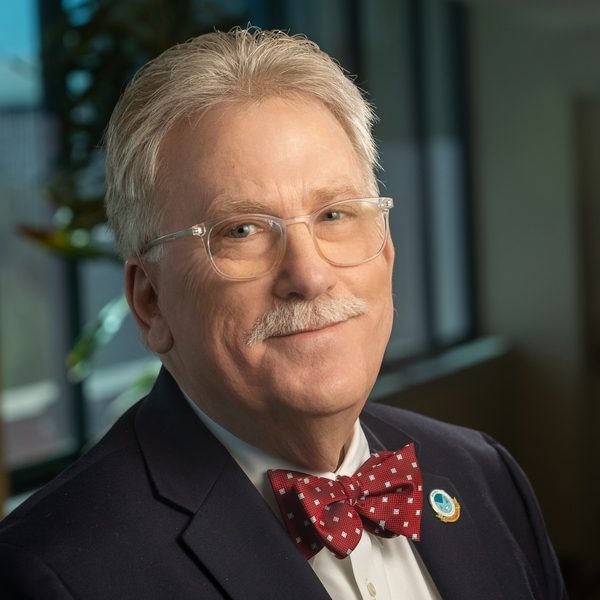One of the most interesting parts of being president of the College is the ability to see many things “up close and personal” that appear to most members as “seamless” but are, in fact, the results of incredible amounts of effort by our College staff, vendors and member volunteers. Nowhere is this more evident to me than all the workings that go into the preparation and execution of our annual meeting. What does it take to bring the ACAAI Annual Scientific Meeting to life each year? Believe it or not, planning for five fast days of our education-packed sessions takes years to prepare.
Approximately six years prior to the annual meeting, College staff begins working with the Annual Meeting Site Selection Committee. The Site Selection Committee is composed of the Immediate Past President, who serves as chair, and four additional members. The Committee works closely with staff to investigate multiple cities to evaluate their capacity to host our meeting over our preferred meeting dates, then assembles the related costs along with other key information about each destination. This information is then presented to the Board of Regents, who selects the preferred city based on the information presented (and contingent upon the negotiation of acceptable contract terms). Then, staff works with the various venues to negotiate the most favorable contract terms for the College and provides the required deposits to secure the necessary meeting space and sleeping rooms.
Approximately 1.5 years prior to the meeting, a meeting theme is determined and promotional graphics are developed. The theme encompasses a recurrent phrase “Podium to Practice,” which emphasizes the pragmatic nature of our programming for attendees to simultaneously deepen their scientific knowledge while learning how to better care for our patients. For the 2024 meeting, the theme is “Podium to Practice: Advancing Allergy/Immunology Discovery” to describe the most current research studies that will help us in our practices.
Approximately one year out, the College solicits proposals from our science committees and general members regarding potential sessions, lectures and speakers they recommend for inclusion in the meeting. These proposals are important as ACAAI uses them to develop meeting content that is both highly relevant to our members and compliant for certified medical education credit.
The Annual Meeting Program Committee, currently led by Program Committee Chair, Dr. Jay Lieberman and Vice Chair Dr. Kristin Sokol, includes the College President, Executive Medical Director and liaisons from each of the ACAAI science committees. This group reviews the submitted proposals and begins to assemble the annual meeting program immediately following the close of the previous year’s meeting. Through rigorous email communication and conference calls, the members of the Program Committee analyze and pinpoint the sessions that will deliver the most dynamic and informative education to annual meeting participants. Committee members gather for an in-person meeting (always in Chicago, usually in February/March, and always very cold) to determine and finalize the topics to be addressed within each session – and collaborate to identify esteemed, insightful and engaging speakers. To ensure that session objectives are met, consistent contact with all participating faculty is maintained throughout the meeting development process, and the end result is an effective, must-attend event centered squarely on the educational needs of our attendees.
While the Annual Program Committee is doing its work, the abstract submission site opens to enable members to submit abstracts for consideration. Typically, more than 500 scientific abstracts are submitted each year. The Abstract Review Committee then reviews and slots the selected abstracts into oral or e-poster presentations.
During this same time, College staff works diligently to secure offsite reception and dinner venues and contracts with caterers, transportation companies and other local services that will be needed. In addition, promotional copy is prepared to market the program, the meeting website and mobile app are developed, and the registration system is programmed to begin accepting meeting registrations. Shortly after this, award plaques are ordered, scripts written, signs and slides are created, committee and industry meetings are set up, workshop materials are purchased and assembled, a photographer is contracted, and the College Resource Center booth is planned.
As you can imagine, all of this costs a great deal of money, and the annual meeting registration fees do not come close to covering all of the expenses associated with the meeting. Our corporate relations staff lead the efforts to solicit additional funds from our industry partners to help defray annual meeting costs as well as to support other important College programs and activities. Additional efforts are undertaken to sell exhibit booth space and organize the exhibit hall layout.
Next, detailed meeting room specifications are developed and floor plans produced, audio visual needs are identified and equipment ordered, temp workers and a security firm are hired, the CME credit claiming and evaluation system is developed, the meeting program and other printed materials are created, the FIT Bowl committee begins their work on selecting teams and writing questions, committee meetings are scheduled, travel grant applications are reviewed and grants awarded, and a press kit is created and distributed to media outlets.
Staff also works closely with the contracted decorator/drayage firm to oversee booth shipments and set up the exhibit hall. This firm also delivers and sets up the registration counters, handles the electrical requirements, hangs the ceiling signs, and installs the large display boards, banners and hand sanitizing stations. The meeting materials (including 300+ boxes from our headquarters office and printers alone) are then trucked to the meeting, opened, organized, set up, and used over the meeting dates. Approximately 2,500 meeting registration bags are then stuffed on site for distribution to meeting attendees.
Staff typically arrives on site at the meeting five days in advance to begin the exciting and very labor-intensive process of getting everything ready for attendees’ arrival. As most of you know, we contract for empty rooms, and everything you see when you get there is brought in and set up for the meeting, and then quickly removed on the final day so that the next group can move in. It really is amazing to see this in action.
While this provides a quick glimpse into just some of the activities involved in the development of our annual meeting, there are many (hundreds) of other details and processes that go into organizing and running our meeting to ensure it’s the best it can be. Your Board of Regents and College officers bear the ultimate responsibility for all of the College’s activities but, as you can readily see from the above descriptions, there would be no annual meeting without the efforts of our great staff, vendors and volunteer members. The meeting this fall in Boston will be amazing and we plan for it to be the best one yet (an annual goal that all meetings try to achieve).
So, when you read about our plans for the annual meeting over the next few months, and you get your registration submitted, hotel and travel reservations completed, and then walk around the convention center in Boston after you arrive, I encourage you reflect a minute on all the effort that goes on to enable our College meeting to be second to none in the world of allergy, asthma and clinical immunology.
I look forward to seeing you in Boston, Oct. 24-28!


